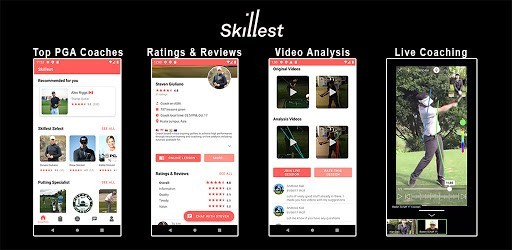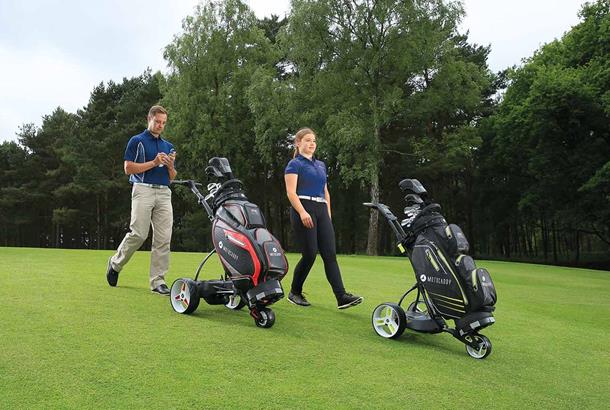60-Degree Wedge Distance: Your Comprehensive Guide
If you’re a golfer looking to perfect your short game, understanding the distance for a 60-degree wedge is crucial. This valuable club is indispensable when you need to escape tight spots around the green. In this article, we’ll cover everything you need to know about the distance for a 60-degree wedge, from what it is to how to use it effectively.

What is a 60-Degree Wedge?
Before diving into the specifics of the 60-degree wedge, let’s start with the basics. A wedge is a golf club used for short shots around the green. It is designed to create a high trajectory with a soft landing, making it easier to stop the ball quickly. The loft angle of a wedge determines the trajectory and distance of the ball. A 60-degree wedge has a high loft angle, making it ideal for short shots from close range.

How Far Can You Hit a 60-Degree Wedge?
The distance you can hit a 60-degree wedge depends on several factors, including your swing speed, ball type, and the course conditions. On average, a golfer can hit a 60-degree wedge between 50 to 70 yards; however, this can vary depending on the individual golfer’s abilities and the specific circumstances of the shot.
| Club | Loft (Degrees) | Average Distance (yards) |
|---|---|---|
| Pitching Wedge (PW) | 44-48 | 110-140 |
| Gap Wedge (GW) | 50-54 | 90-120 |
| Sand Wedge (SW) | 54-58 | 80-110 |
| Lob Wedge (LW) | 58-64 | 60-90 |
How to Use a 60-Degree Wedge Effectively
To use a 60-degree wedge effectively, it’s essential to understand the technique involved. Here are some tips to help you get started:

Position the Ball Correctly
It would be best to position the ball correctly to achieve maximum distance and accuracy. Place the ball slightly forward in your stance, with your hands ahead of the ball at the address. This setup will help you make clean contact with the ball and produce a higher trajectory.
Open the Clubface
Opening the clubface at the address can increase the loft angle and help produce a higher trajectory. Align the clubface slightly to the right of your target to create more spin and control.
Use a Short Backswing
With a 60-degree wedge, a shorter backswing is essential to maintain control and accuracy. Keep your backswing short and compact, focusing on the rhythm and timing of the shot.
Accelerate Through Impact
To get the most out of your shot, accelerate through impact. A smooth and consistent follow-through will produce a high trajectory and soft landing.
Real-Life Examples
Understanding the distance for a 60-degree wedge is crucial for all golfers, but it’s especially important for those who play competitively. Let’s look at real-life examples of how a 60-degree wedge can help you improve your game.

Example 1: The Flop Shot
The flop shot is challenging and requires a high trajectory and soft landing. To execute this shot, you must use a 60-degree wedge to create maximum loft and spin. Positioning the ball forward in your stance and opening the clubface can produce a high trajectory and soft landing, allowing you to stop the ball quickly.
This is a shot that was made famous by Phil Mickelson, his confidence to play this shot in pressure moments early in his career during PGA tournaments was incredibly impressive!
Example 2: The Bunker Shot
Getting out of a bunker can be tricky, but with a 60-degree wedge, you can make it easier. By opening the clubface and using a short backswing, you can create maximum loft and spin, allowing the ball to pop out of the bunker and land softly on the green.
Factors that Affect Distance for 60-Degree Wedge:
The distance you can hit your 60-degree wedge depends on several factors, including swing speed, loft angle, ball position, and ball spin. Let’s take a closer look at each of these factors.

Swing Speed:
Swing speed is the speed at which you swing the clubhead through impact. The faster your swing speed, the farther you can hit the ball. However, swinging too fast can result in poor contact and less control over the shot.
Loft Angle:
The loft angle of your wedge determines the trajectory of your shot. A higher loft angle will result in a higher ball flight and shorter distance, while a lower loft angle will result in a lower ball flight and longer distance. The 60-degree wedge has a higher loft angle than other wedges, making it ideal for shots that require a high trajectory.
Ball Position:
The ball’s position in your stance can also affect the distance you can hit your 60-degree wedge. Placing the ball farther forward in your stance will result in a higher ball flight and shorter distance while placing the ball farther back in your stance will result in a lower ball flight and longer distance.
Ball Spin:
The amount of spin you put on the ball can also affect the distance it travels. Adding more spin to the ball can result in a higher ball flight and shorter distance while reducing spin can result in a lower ball flight and longer distance.
Tips for Improving Distance Control with 60-Degree Wedge:
Now that we know the factors that affect distance for the 60-degree wedge, let’s look at some tips to help you improve your distance control with this club.

Practice:
The key to improving your distance control is practice. Spend time on the range hitting shots with your 60-degree wedge, varying your swing speed, ball position, and spin to get a feel for how each affects the distance of your shots. Using budget rangefinders can help you accurately measure your shot distances during practice.
Use a Launch Monitor:
A launch monitor can help you track your swing speed, ball speed, and other distance metrics. This can help you identify areas to improve and adjust your swing accordingly.
Learn Your Wedge Distances:
Knowing how far you can hit your 60-degree wedge is essential to playing your best golf. Spend time on the range or course hitting shots with your wedge and record each shot’s distance. This will help you better understand your wedge distances and improve your distance control. It’s important to have the right equipment, such as irons and a driver that suits your needs.
Conclusion: 60-Degree Wedge
The distance you can hit with a 60-degree wedge depends on various factors, including your swing speed, the type of shot you’re trying to hit, the club loft, the type of ball you’re using, and the conditions on the course. While the maximum distance for a full swing with a 60-degree wedge is typically around 70-80 yards, the club is designed for finesse shots around the green that require accuracy and precision. With the right technique and practice, you can learn to hit various shots with your 60-degree wedge and master the art of finesse around the green.

60-Degree Wedge: FAQ’s
How far can you hit a 60-degree wedge?
The distance a golfer can hit their 60-degree wedge varies depending on many factors. These include the golfer’s swing speed, the type of ball they are using, and the course conditions. On average, most golfers can hit their 60-degree wedge between 60 and 80 yards. However, professional golfers can hit their 60-degree wedge up to 100 yards.
What is a 60-degree wedge for?
The 60-degree wedge is primarily used for short approach shots and around the green. It has a high loft angle that makes it easier to get the ball in the air quickly and land it softly on the green. It is also a useful club for getting out of sand traps and hitting flop shots. The high loft angle allows for better control and precision in these situations, making it a valuable addition to a golfer’s bag.
Are 60-degree wedges hard to hit?
The 60-degree wedge can be a difficult club for some golfers because of its high loft angle, and it requires a precise swing and contact with the ball to hit it effectively. However, with practice and proper technique, golfers can become proficient with the 60-degree wedge.
How far is full swing 60 degrees?
The distance for a full swing with a 60-degree wedge varies depending on the golfer’s swing speed and the type of ball they are using. On average, most golfers can hit their 60-degree wedge between 60 and 80 yards with a full swing. Using the best golf balls can make a difference in achieving optimal distance.
Does a 60-degree wedge go further than a 56?
The 60-degree wedge does not go further than a 56-degree wedge, and the 56-degree wedge has a longer distance range than the 60-degree wedge. The 56-degree wedge is a good choice for golfers who want more distance on their shots.
What are 52, 56, and 60-degree wedges for?
The 52, 56, and 60-degree wedges are the most common in a golfer’s bag. The 52-degree wedge is used for mid-range approach shots and chipping around the green. The 56-degree wedge is used for bunker shots, pitch shots, and chipping around the green. The 60-degree wedge is used for high, soft shots around the green and getting out of deep bunkers.
Fun Golf Equipment Advice

At Fun Golf, we believe that there’s more to golf than just the equipment you use. That’s why we’ve created content that covers a range of topics related to the sport such as 60-Degree Wedge. Here are some of our other articles that we think you might find helpful:
- Golf Insurance: Golf can be an expensive sport, and accidents can happen. That’s why we’ve put together a guide to golf insurance, which can help protect you from unexpected costs. Check out our article on golf insurance to learn more.
- Cheap Golf Rangefinders: Rangefinders can be a valuable tool on the golf course, but they can also be expensive. We’ve researched and tested some of the best affordable rangefinders on the market, and put together a guide to help you find the right one for your needs. Check out our article on cheap golf rangefinders to learn more.
- Beginner Golf Balls: If you’re just starting out in golf, choosing the right balls can be confusing. We’ve reviewed some of the best golf balls for beginners, taking into account factors such as distance, spin, and feel. Check out our article on beginner golf balls to learn more.
- Best Golf Trolleys: Carrying your golf bag can be tiring, which is why many golfers opt for a trolley. But with so many options on the market, it can be difficult to know which one to choose. We’ve researched and tested some of the best golf trolleys, and put together a guide to help you make an informed decision. Check out our article on best golf trolleys to learn more.
By exploring these topics, you can improve your overall golfing experience and make the most out of your time on the course. And as always, we at Fun Golf are committed to providing you with accurate and helpful information to help you enjoy the sport to its fullest. Be sure to join our Fun Golf Community for tips, advice and exclusive discounts off popular golf brands.




